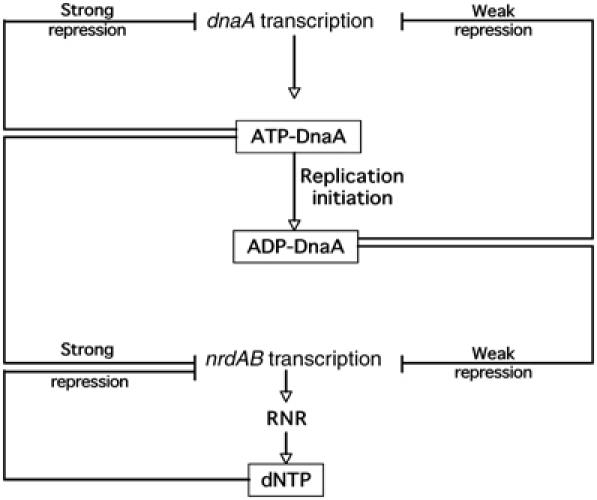Figure 7.

Model for coupling of deoxyribonucleotides (dNTPs) synthesis and DNA replication by the initiation factor DnaA. Newly synthesized DnaA protein is in the ATP-bound form, which is active for DNA replication initiation. ATP-DnaA is also a transcriptional repressor of dnaA and nrdAB genes. At the end of initiation, ATP-DnaA is hydrolyzed to ADP-DnaA in a β-subunit-dependent manner. The fraction of DnaA protein in the cell in the ADP-bound form increases. ADP-DnaA causes only a weak repression of nrdAB operon transcription, which leads to an increase of dNTP synthesis, allowing elongation to occur. ADP-DnaA also causes only weak repression of dnaA leading to newly synthesized DnaA. If DNA replication is slow or does not occur, cells experience a time lag between successive replication cycles. During this lag period, ATP-DnaA accumulates in the cell as RIDA would not be functioning because of the absence of DNA-loaded sliding clamps. Binding of ATP-DnaA to the DnaA boxes of the nrdAB promoter leads to a strong repression of nrdAB transcription and to a cessation of RNR synthesis.
